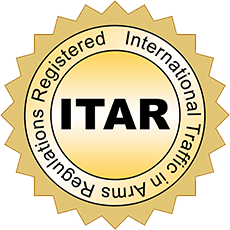TDR Modelling & Testing
In today’s digital electronics interference is a big concern, especially when it comes to video, USB interfaces, Ethernet, and other wireless communications. “Noise” in a circuit can result in anything from poor picture quality to a loss or degradation of critical signals.
Every wire and every circuit that transmits electricity has a resulting electromagnetic field around it, surrounding it and affecting the surrounding area. This can be felt by a human being near high power lines. Though circuits on a board do not carry near as much electricity as a high-power line, the electromagnetic field is still there, even though it’s a lot weaker.
In a critical design, the electromagnetic field can interfere with the signal flow in an adjacent circuit. This field can be controlled by the width and height of the circuit, as well as its proximity to a plane layer. Impedance is measured in Ohms.
A Single-Ended impedance circuit is one circuit by itself, and the impedance reading concerns the effect it is having on the surrounding circuitry. This circuit could still be in a group, but it is evaluated independently. High impedance from a circuit in a sensitive area can interfere with surrounding signals. In the digital world, this can lead to excessive noise or other problems.
To have a circuit that will not affect surrounding signals, as a rule of thumb, the distance to the nearest adjacent circuit or feature of any kind must be 20X the circuit width. Since that is not possible in today’s high-density designs, the impedance of a circuit can be controlled using a variety of different methods; from specialty materials with varying Dk values, to varying the distance to a plane layer, which helps absorb excess electromagnetic radiation. Varying the circuit width and height will also have a major effect in the surrounding impedance.
Single –ended impedance can easily be controlled once a baseline is determined. Bringing a plane layer (power or ground) closer to the signal layer lowers the impedance, since more of it is absorbed by the surrounding metal. Similarly, the circuit can be surrounded by a ground plane on the same layer, to form what is known as a co-planar waveguide, to achieve the same results. What matters is the distance to ground, and the “dielectric” of the layers the electromagnetic waves must travel through to get absorbed by the metal.
Since bringing the ground closer lowers the impedance, adding pre-preg and increasing the distance to the ground layer will inversely increase the impedance.
Another factor is the total cross-sectional area of the circuit or wire. The height and the width are very critical. As the circuit’s cross-sectional area decreases, the impedance increases. Adversely, as the cross-sectional area increases, the impedance decreases.
For example: If I have a circuit that is testing at 60 Ohms and I want it to be 50 Ohms, I can either increase the circuit width, use heavier copper to increase the circuit height, or bring the ground plane closer by using a thinner core or less pre-preg.
Differential impedance involves two circuits running next to each other, and the effect they have on one another. Even impedance is calculated when the signals are running the same way, and odd is calculated when the signals are running opposite from each other. The Differential is calculated using the odd and even. Generally, differential impedance is used to match the circuits on a board to the cable they will connect.
For example:
USB cables are a standard twisted pair of wires with 90 Ohm ± 15% differential impedance. Circuits designed to connect to that USB cable are generally required to be 90 Ohms ±10%, to match the cable impedance.
Another example is Ethernet, which uses cables of 100 Ohm ± 15% impedance. The circuits designed to connect to this cable will generally be 100 Ohms ±10%.
Manufacturability:
Having one or two impedances on a board is a relatively standard requirement, depending on the connectivity required. This is becoming prevalent on more and more designs. Each circuit will influence the surrounding area, and with each impedance requirement, the margin of error increases. It is not uncommon for Rockymountain Circuits, Inc. to build a 16-layer board with a single ended 50 Ohm controlled impedance on each signal layer along with 90 Ohm USB and 100 Ohm Ethernet circuits on those same layers. Precision is the key to success.
Another major factor in the success of controlling the impedance of a circuit (or any conductor for that matter) is the size. The larger the circuit, the easier it is to control the impedance. It is easier to control an etched circuit to ± 1 mil width. Repeatability is 100% when the board is designed to have 12 mil circuits. When the circuitry is reduced to 4 or 5 mils, though, controlling the circuit width to ± 1 mil is no longer acceptable. This is since the requirement is in %. 1 mil is 25% of a 4-mil circuit, when it is only 8.3% of a 12-mil circuit.
The thinner the circuitry, the more demanding the manufacturing process. Tolerances can drop below the point where it is physically possible to control the width of a circuit. If the required circuitry gets small enough, the edge of the circuit itself becomes a factor.
It is advantageous to design a 7-mil controlled impedance circuit over a 4 mil for repeatability and manufacturability. Tolerances can become unbearable as circuitry is miniaturized. Though there is a small amount of gained real estate, the resulting additional processing required to meet a ±10% differential impedance specification at this circuit width could become cost prohibitive.



